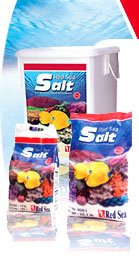
Before anything else can take place in this hobby you have to make a decision about a tank. The tank will be your host for an ocean ecosystem. This is probably the single most important decision to make as it will influence every other choice you have to make in the future. I will take you through each of the aspects on choosing a tank so that you can make the most informed decision
(Size)
When dealing with a marine system or even a freshwater system there is a prevailing idea that makes a lot of sense.
Bigger is always better. I would say that this is true up to a point and we will get into this. The reason that bigger is better stems from the fact that it is much easier to maintain a stable system with a larger body of water. The constraints against going larger have to do with the final weight of the system and cost of filling and maintains a larger tank. It will cost a lot more to fill a larger tank with inhabitants/rock and be more expensive to run. But it will allow you to have more options on inhabitants etc. The minimum size tank that I would recommend for a beginner would have to be a 55 gallon. Anything smaller and you are asking for disaster. Marine fish/corrals also require more space due to aggressiveness of most of the species and size of final specimen. If you go too small you may find that you can not keep that one fish you have been eyeing at your local fish store (LFS).
(Shape)
There are many different shapes of tanks out there. (Hexagonal, cylindrical, cube, ...) I would strongly recommend that you stay away from all of them and stick with a standard rectangular tank. The reason for this is due to the large surface area of these tanks. A larger surface area promotes gas exchange (carbon dioxide and oxygen) allowing more oxygen to make it into the tank and more carbon dioxide to escape. Increased oxygen levels allow you to keep more fish in the tank and keep them healthier.
Another factor is the depth of the tank. The deeper the tank you have the harder it will be to clean and the stronger the lighting that will be required for it. Always try and choose a tank that is longer rather than deeper.
One final factor is bowfront vs non-bowfront. Bowfront tanks give a more interesting view of the inhabitants but can also be harder to clean. You would also need to use a stand made for a bowfront which may be harder & more costly to obtain.
(Material)
There are two choices for this. Aquariums are made of one of two materials either glass or acrylic.
Glass aquariums are the old standard. Pros: Easy to find, inexpensive, resist scratching. Cons: Heavy, Block a bit of light transmission.
Acrylic are a new type. Pros: Lighter than equivalent glass, great light transmission. Cons: Harder to find, prone to scratching, require a stand with an internal brace, more expensive than glass.
(Drilled/Not drilled)
Drilled aquariums come ready with a hole used for moving water to a sump (which is essentially a tank of water stored external to aquarium). They allow you to avoid having to use an external overflow for moving water to a sump which can potentially be a cause for problems. If you are using a non-drilled tank you will have to use either an external overflow for moving water to a sump or use no sump at all.






